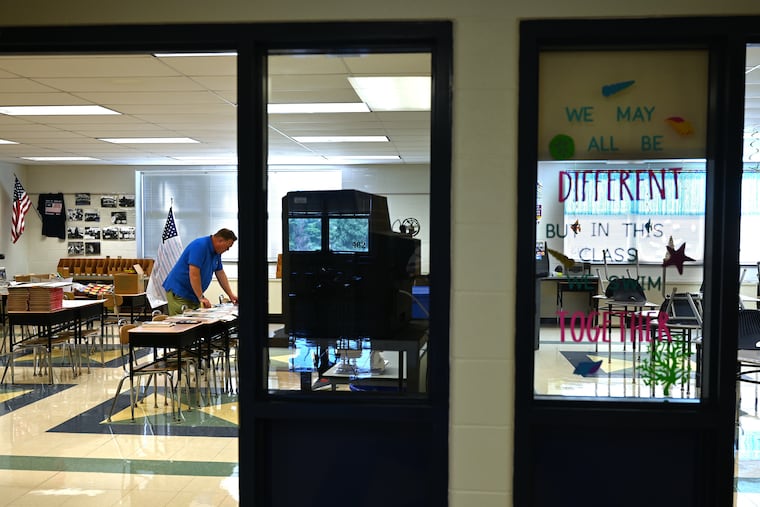Pa. issued the lowest number ever of new teaching certificates as educator shortage worsens
“Children across the state are not going to have access to well-prepared teachers, and that’s going to affect their academic outcomes,“ said Ed Fuller, a Penn State associate professor of education.

Pennsylvania’s teacher shortage is worsening, with the state’s education programs producing a record-low number of certified teachers in the 2021-22 school year, according to a new analysis.
Just 4,220 graduates of Pennsylvania teacher preparation programs earned state teaching certificates in 2021-22, with a total of 5,101 new-teacher licenses issued when out-of-state graduates are factored in. That’s down from a high-water mark of more than 16,000 certifications earned in 2012-13.
At the same time, the number of emergency-certified teachers continued to rise; for the first time, the number of new teachers without full credentials — 6,366 — outpaced those who earned certification.
» READ MORE: Teachers wanted: the Pennsylvania educator shortage (from June 2022)
The numbers raise an alarm for Ed Fuller, an associate professor in the education policy studies department at Pennsylvania State University and author of a recently released research brief on the subject.
“This exacerbates the existing teacher shortage,” Fuller said. “That means that children across the state are not going to have access to well-prepared teachers, and that’s going to affect their academic outcomes.”
The trend line is particularly worrisome for such districts as Philadelphia and Reading: large, poor, urban school systems that historically have a tough time filling positions, and especially attracting teachers of color.
The increase in emergency-certified teachers across the state is a real concern, too, Fuller said. Those teachers tend not to stay in the profession as long, leading to increased turnover and destabilization for schools.
And, “if you haven’t completed full certification, you cannot be as effective in improving student outcomes,” Fuller said. “Those teachers are more likely to have a negative effect on student achievement precisely at a time when we’re trying to accelerate student achievement because of the affects of the pandemic.”
Though there’s an across-the-board teacher shortage, the deficiencies are particularly acute in certain subject areas, including computer science/technology education, business education, and foreign language, all of which saw drops of 80% or greater in the number of new teachers certified over the past 11 years.
Philadelphia saw the steepest decline in the state for new teachers certified — 54%, a drop of 944, with 540 new teachers certified in 2021-22, down from 1,484 in 2010-11. Bucks County saw a 45 certificate decrease, Chester County a drop of 373, Delaware County a loss of 252, and Montgomery County a loss of 336.
The state’s top four teacher-producing schools of education all saw large drops in new teachers during that time period, too: West Chester University produced 304 new teachers in 2021-12 compared with 613 in 2010-11, Penn State University Park saw a drop of 329 new teachers, Kutztown University had 363 fewer teachers, and Temple University, 347.
Schools across the country are experiencing teacher shortages, but Fuller said the Pennsylvania problem is spurred in part by teacher salaries — the average teacher salary in the commonwealth has actually declined over the last 20 years, according to the Penn State report — and barriers to entry, including costly tuition bills and certification fees and a lack of paid student teaching experiences.
While the data are grim, there are some reasons for hope, Fuller said: Everyone from school superintendents to higher education institutions are now paying attention to the teacher shortage. State lawmakers have introduced bills aimed at making teaching a more attractive profession, from bumping up the minimum teacher’s salary to $60,000 (it’s now $18,500) to offering scholarships and loan forgiveness to those who teach in Pennsylvania classrooms or agree to do so after graduation.
Pennsylvania last year laid out a road map for increasing the number of teachers it produces and lowering the number of vacancies at schools statewide — from amping up recruiting to making policy changes in teacher prep programs.
State officials said at the time that they wanted to increase the number of students in teacher prep programs by 2025 to 21,600, from 18,000.